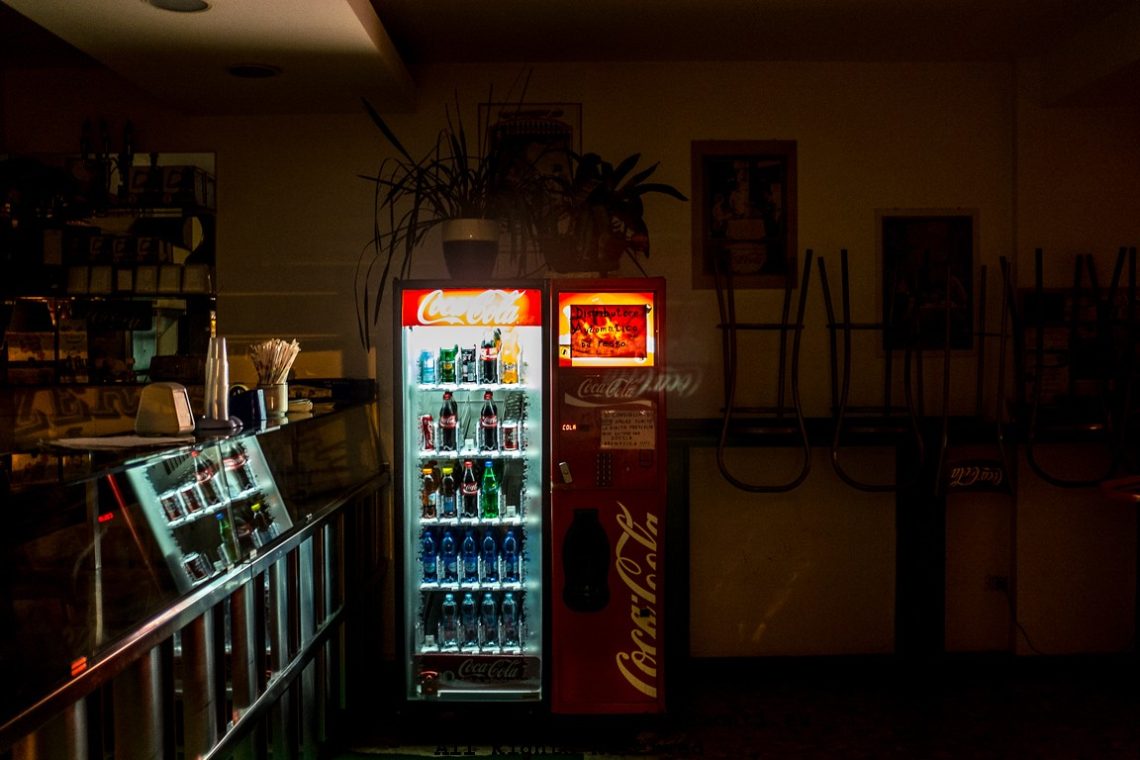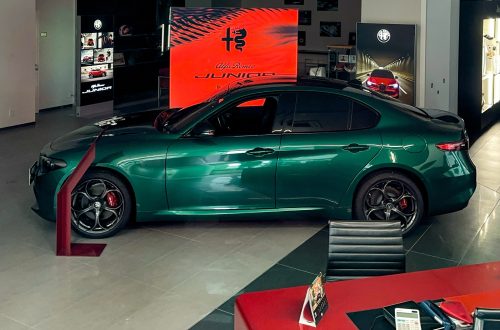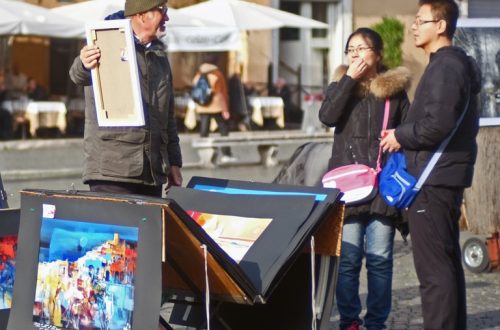
A Beverage Dispenser
The scene is dim, almost swallowed by shadow, yet two islands of light remain. At the centre of the frame, a refrigerated Coca-Cola display glows cold blue-white, its bottles and cans lined like soldiers on parade. Beside it, an older vending machine hums softly, its red housing lit from within by a warmer, almost nostalgic orange. Together they form a diptych of light—past and present vending, side by side.
This photograph thrives on contrasts: the artificial chill of the drink cooler against the tungsten warmth of the coin-operated relic, the corporate gloss of branded red against the creeping darkness of a closed café. In the far right, upturned chairs signal the absence of patrons; the day’s commerce is over. The glass counter on the left catches faint reflections of the fridge, pulling the light deeper into the shadows.
Compositionally, the image places the viewer in the role of after-hours intruder. The machines stand as sentinels in an otherwise unlit space, their presence heightened by the lack of human figures. The potted plant above adds a note of organic chaos to the ordered display below—a reminder that even in commerce, there is always some uncontrolled life pressing in at the edges.
This is a study in low-light discipline. Exposure is weighted to preserve the machines’ glow without blowing highlights, allowing the surrounding darkness to thicken into texture rather than void. The result is both documentary and cinematic—a record of objects in their ordinary function, transformed into luminous characters in the absence of people.
It’s a photograph that asks nothing more than for us to look, to see the strange beauty in commercial mundanity, and to understand that even a vending machine can own the room once the lights go out.




